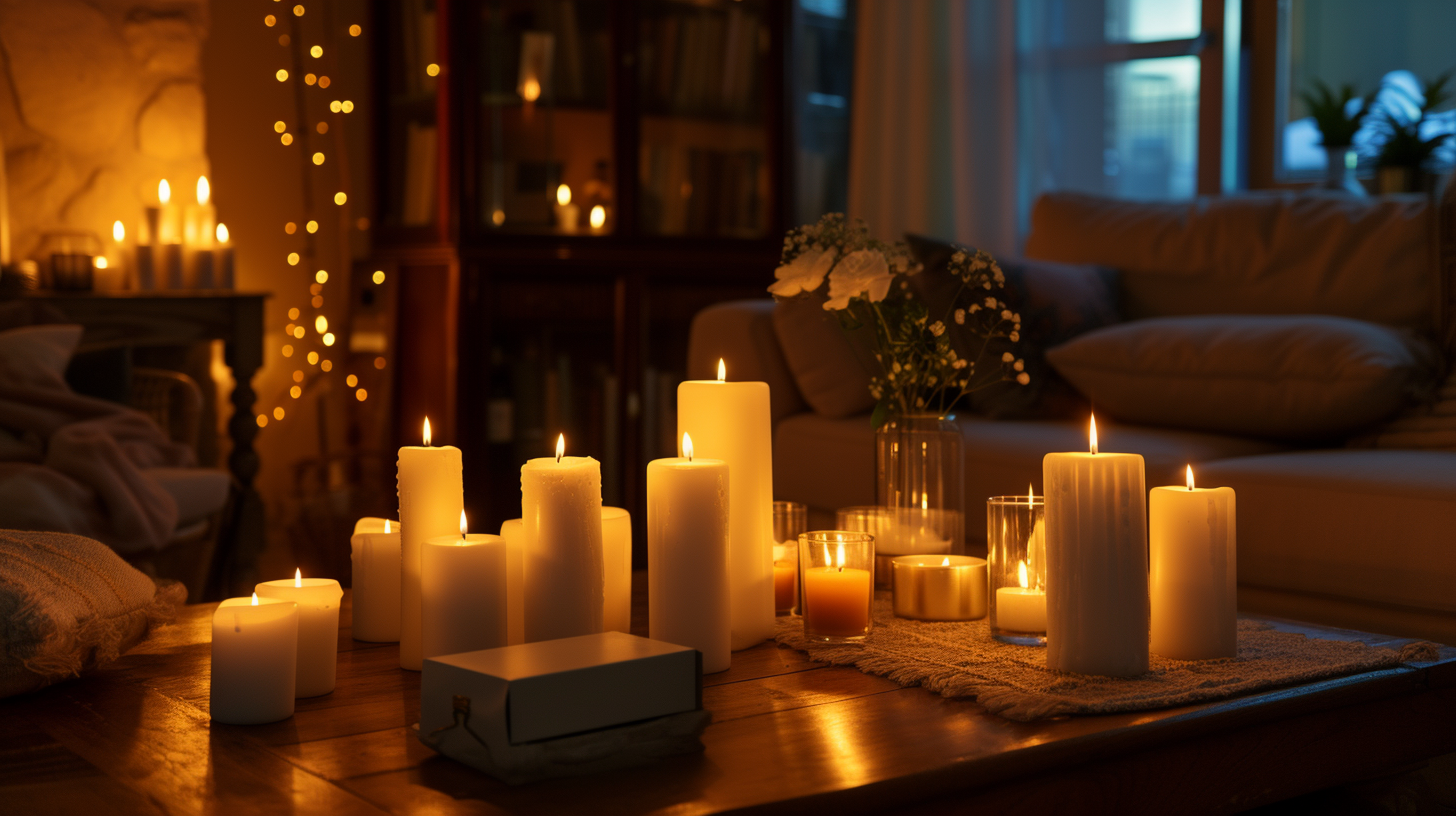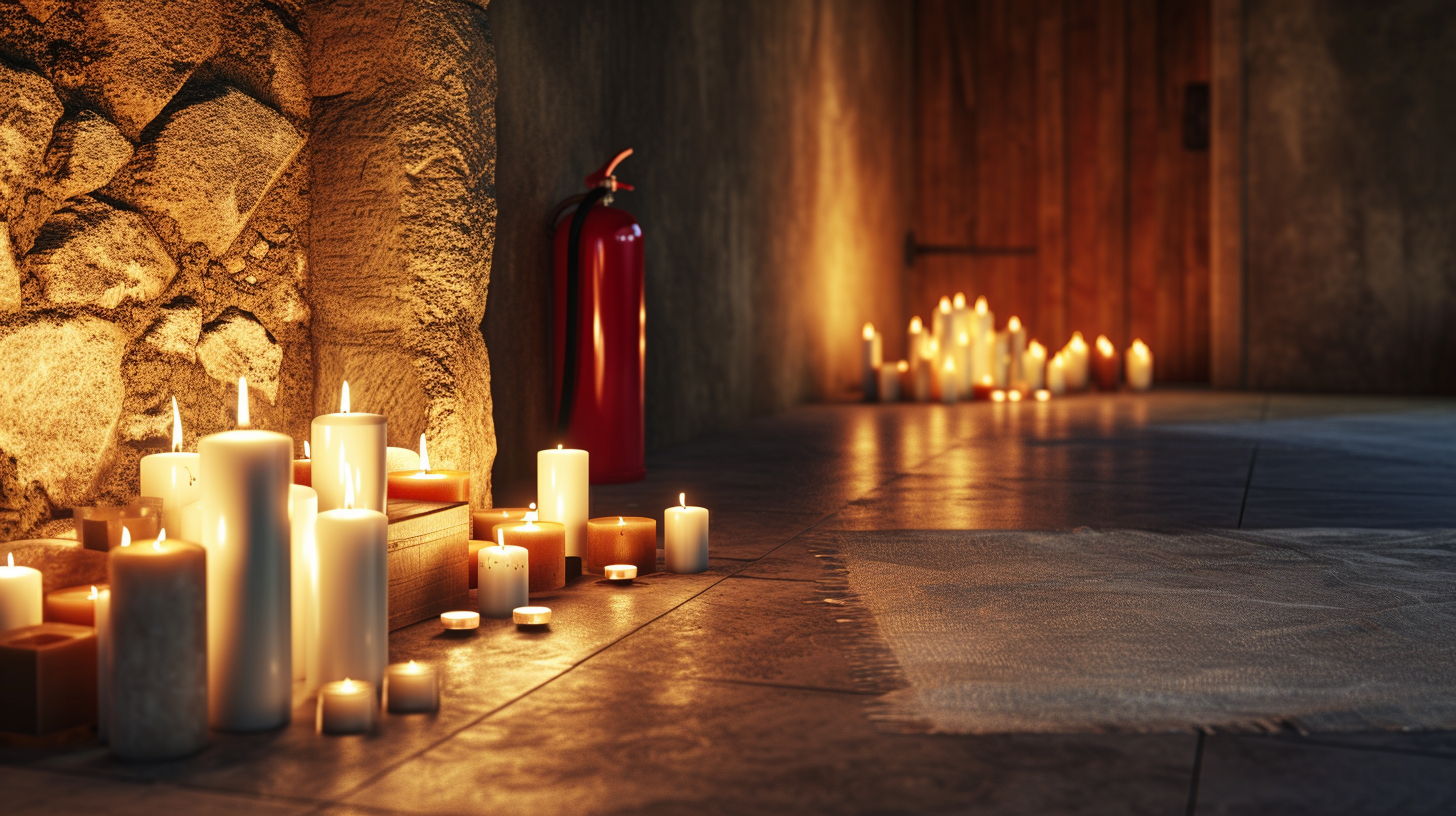You might think that in today’s world, with all the advancements in technology, candles for emergency lighting are a thing of the past. However, when the power goes out, and you’re left in the dark, having a sufficient number of candles can make a significant difference.
It’s not just about having a few candles tucked away in a drawer; it’s about understanding how many you actually need to effectively illuminate your space during an emergency. The number of candles required varies significantly depending on the size and layout of your home, as well as the duration you anticipate needing them.
As we explore the basics of candle count, calculating your specific needs, and the best practices for placement and safety, you’ll discover that there’s more to emergency lighting than you might have initially thought. This knowledge ensures you’re not just prepared, but adequately equipped to maintain visibility during those critical moments when every second counts.
Key Takeaways
- Illumination standards require a brightness of at least 1 foot-candle along the path of egress at floor level.
- The number of candles or lights required depends on the layout of your space and the desired illumination levels.
- Proper placement of candles along corridors, stairways, and doorways is crucial to ensure consistent lighting and prevent unlit spots.
- Regular maintenance, testing, and adherence to safety precautions are essential for reliable emergency lighting during power outages.
Candle Count Basics
Understanding the basic requirements for emergency lighting, you’ll find that determining the right number of candles hinges on specific illumination standards. Initially, emergency lighting must ensure a brightness of at least 1 foot-candle along the path of egress at floor level. This initial requirement is crucial for safety, guiding you and others to exits in an emergency. One foot-candle, translating to one lumen per square foot, sets the benchmark for the minimum illumination needed to navigate safely.
Emergency lighting requirements stipulate that all exits and paths of egress must be adequately lit. This means that every area leading to an exit requires sufficient lighting to meet or exceed the 1 foot-candle minimum. However, as time progresses, the illumination levels can decline. After 1.5 hours, the average lighting may drop to 0.6 foot-candles, with the absolute minimum allowed being 0.06 foot-candles. This gradual decrease accounts for the potential diminishing performance of emergency lighting over time.
To comply with these standards, you’ll need to assess the layout of your space and calculate the number of candles or lights required to maintain these minimum and average illumination levels. Ensuring you have enough emergency lighting is critical for safety, especially during a power outage or other crises necessitating egress.
Calculating Candle Needs
Now that you’re familiar with the basic requirements for emergency lighting, it’s crucial to figure out how many candles you’ll need for your specific space. Start by determining the total area of your building, including the size of rooms and open spaces. This step is essential to ensure you have enough candles to achieve the required illumination levels.
Next, consider the placement of exits, corridors, stairways, and doorways. They need to be well-lit to ensure safety, which means calculating the required number of candles to maintain an average of 1 foot-candle initially along these paths of egress. After 1.5 hours, the minimum illumination shouldn’t drop below 0.6 foot-candle to comply with safety standards.
Remember, the maximum-to-minimum illumination ratio shouldn’t exceed 40 to 1 to provide consistent lighting across all areas. This calculation ensures that no spot has less than 0.1 ft-candle, maintaining an acceptable level of visibility.
Lastly, don’t hesitate to seek professional help. Testing of Emergency Lighting and understanding emergency lighting systems can get complex. A professional can help navigate these complexities, ensuring your emergency lights meet the required standards and keep everyone safe.
Candle Placement Strategies
When planning your emergency lighting, it’s crucial to strategically place candles to ensure no area is left in darkness during an emergency. The right placement not only guarantees minimum illumination but also ensures safety by lighting up the path of egress.
Here’s how to make your emergency lighting effective:
- Along the Egress Path: Ensure candles are placed at regular intervals along corridors, stairways, and doorways leading to exits. This continuous light source maintains an illumination uniformity ratio, making navigation easier during a power outage.
- At Strategic Points: Position candles at intersections, angles, and areas prone to darkness to prevent any part of the egress path from being unlit if a single lighting unit fails.
- Ensure Illumination Automatically: By arranging candles in key areas, you guarantee that illumination automatically covers critical sections of your building without manual intervention.
- Consider Building Layout: The size and layout of the building dictate the placement of candles. More candles may be necessary in larger spaces to keep the emergency lighting effective.
Types of Emergency Candles
Exploring the types of emergency candles can significantly enhance your preparedness for power outages by providing tailored lighting solutions for various needs and scenarios. When the lights go out, having the right candles can mean the difference between being left in the dark and having a reliable light source. Emergency lighting, including candles, is crucial for ensuring safety during the failure of normal lighting.
| Type of Candle | Best Use | Emotional Benefit |
|---|---|---|
| Standby Lighting Candles | Backup during power failures | Peace of mind knowing you’re prepared |
| Emergency Escape Lighting Candles | Illuminating escape routes | Confidence in a safe exit strategy |
| High-risk Task Area Lighting Candles | Critical areas needing more light | Assurance in maintaining safety in crucial moments |
Each candle type offers a specific level of illumination, from minimum luminance to ensuring no area is in darkness due to a single lighting unit failure. Remember, the emergency lighting system, including candles, requires regular maintenance to function correctly. Testing and Maintenance are as crucial as having the candles themselves, ensuring they’ll work when your power systems fail. Keep these candles on hand to ensure you’re never left in the dark.
Candle Safety Precautions
After discussing the types of emergency candles and their uses, it’s crucial to focus on how to use them safely to prevent accidents. Emergency lighting, when used correctly, can provide the necessary illumination to keep your surroundings safely illuminated during power outages. However, without adhering to candle safety precautions, you risk turning an emergency solution into a hazard.
To ensure illumination uniformity and maintain minimum illumination levels, follow these guidelines:
- Ensure candles are placed on a stable, heat-resistant surface to prevent tipping over.
- Keep candles away from flammable materials or any items that could catch fire.
- Never leave a burning candle unattended and keep them out of reach of children and pets.
- Trim the wick to 1/4 inch before each use to prevent excessive flame and soot.
Longevity and Burn Time
Understanding the longevity and burn time of your emergency lighting is key to ensuring you’re never left in the dark during an outage. Knowing how long your emergency lighting will last is crucial, especially when normal lighting fails and you’re reliant on these sources for illumination.
The minimum burn time of emergency lighting should be at least 90 minutes. This duration isn’t arbitrary; it’s designed to provide ample time for a safe evacuation in the event of a power failure.
It’s also vital to consider the longevity of your emergency lighting. These sources need to remain functional over time without frequent replacements. Ensuring they can be illuminated for a minimum of 90 minutes during each use is essential.
To guarantee this reliability, an annual test of your emergency lighting’s time and efficiency is recommended. This test helps confirm that the lighting will remain consistently illuminated for the required duration during emergencies.
Supplemental Lighting Options
While emergency lighting is essential, you shouldn’t overlook the value of supplemental lighting options to brighten your space during a power outage. These options can provide the extra illumination needed to safely navigate your home or building without relying solely on candles or the basic emergency illumination provided by your building’s lighting facilities.
Consider incorporating these supplemental lighting options into your emergency plan:
- Battery-operated LED lights: Ideal for areas that need consistent brightness without the fire risk associated with candles. Plus, with solar charging capabilities, you can ensure they’re always ready for use.
- Portable lamps: These can be strategically placed to light a path or specific areas, offering flexibility in your emergency lighting setup.
- Emergency generators: Following NFPA 110 guidelines for installation, testing, and maintenance, generators can supply electrical power to your emergency lighting system, ensuring that critical areas remain illuminated.
- Glow sticks: An easy-to-use, maintenance-free option that can provide immediate, short-term lighting in an emergency situation.
Conclusion
In conclusion, ensuring you have enough candles for emergency lighting needs is important. It’s not just about the count, but also the placement and types of candles you choose. Safety should always be a priority, so following precautions to prevent accidents is crucial. Additionally, considering the burn time of the candles will help keep your space lit for as long as necessary. Lastly, don’t forget that supplemental lighting can provide extra security. With the right approach, you can keep your space safe and illuminated during emergencies.





